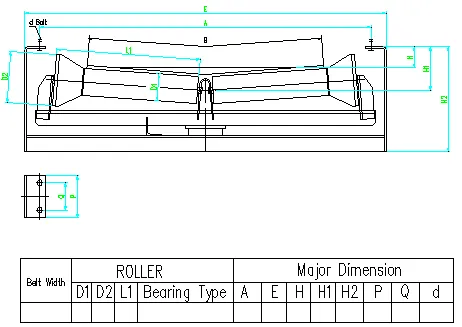 Afrikaans
Afrikaans  Albanian
Albanian  Amharic
Amharic  Arabic
Arabic  Armenian
Armenian  Azerbaijani
Azerbaijani  Basque
Basque  Belarusian
Belarusian  Bengali
Bengali  Bosnian
Bosnian  Bulgarian
Bulgarian  Catalan
Catalan  Cebuano
Cebuano  Corsican
Corsican  Croatian
Croatian  Czech
Czech  Danish
Danish  Dutch
Dutch  English
English  Esperanto
Esperanto  Estonian
Estonian  Finnish
Finnish  French
French  Frisian
Frisian  Galician
Galician  Georgian
Georgian  German
German  Greek
Greek  Gujarati
Gujarati  Haitian Creole
Haitian Creole  hausa
hausa  hawaiian
hawaiian  Hebrew
Hebrew  Hindi
Hindi  Miao
Miao  Hungarian
Hungarian  Icelandic
Icelandic  igbo
igbo  Indonesian
Indonesian  irish
irish  Italian
Italian  Japanese
Japanese  Javanese
Javanese  Kannada
Kannada  kazakh
kazakh  Khmer
Khmer  Rwandese
Rwandese  Korean
Korean  Kurdish
Kurdish  Kyrgyz
Kyrgyz  Lao
Lao  Latin
Latin  Latvian
Latvian  Lithuanian
Lithuanian  Luxembourgish
Luxembourgish  Macedonian
Macedonian  Malgashi
Malgashi  Malay
Malay  Malayalam
Malayalam  Maltese
Maltese  Maori
Maori  Marathi
Marathi  Mongolian
Mongolian  Myanmar
Myanmar  Nepali
Nepali  Norwegian
Norwegian  Norwegian
Norwegian  Occitan
Occitan  Pashto
Pashto  Persian
Persian  Polish
Polish  Portuguese
Portuguese  Punjabi
Punjabi  Romanian
Romanian  Russian
Russian  Samoan
Samoan  Scottish Gaelic
Scottish Gaelic  Serbian
Serbian  Sesotho
Sesotho  Shona
Shona  Sindhi
Sindhi  Sinhala
Sinhala  Slovak
Slovak  Slovenian
Slovenian  Somali
Somali  Spanish
Spanish  Sundanese
Sundanese  Swahili
Swahili  Swedish
Swedish  Tagalog
Tagalog  Tajik
Tajik  Tamil
Tamil  Tatar
Tatar  Telugu
Telugu  Thai
Thai  Turkish
Turkish  Turkmen
Turkmen  Ukrainian
Ukrainian  Urdu
Urdu  Uighur
Uighur  Uzbek
Uzbek  Vietnamese
Vietnamese  Welsh
Welsh  Bantu
Bantu  Yiddish
Yiddish  Yoruba
Yoruba  Zulu
Zulu Essential Components of Conveyor Pulley Systems for Efficient Material Handling
Understanding Conveyor Pulley Parts
Conveyor systems are integral to various industries, facilitating the movement of materials efficiently. At the heart of these systems lies the conveyor pulley, a key component responsible for driving and redirecting the belt. Understanding the different parts of a conveyor pulley is essential for optimal operation and maintenance.
Understanding Conveyor Pulley Parts
End discs are another vital part of the conveyor pulley. These discs are attached to the ends of the shell and serve to contain the belt and prevent it from slipping off during operation. They are typically welded to the shell to ensure a solid connection, which enhances the overall strength of the pulley.
conveyor pulley parts

A significant feature of many conveyor pulleys is the shaft, which is the central component around which the pulley rotates. The shaft is usually crafted from high-quality steel to withstand the stresses of heavy loads and continuous operation. Proper alignment of the shaft is crucial for minimizing wear and ensuring the longevity of both the pulley and the conveyor system.
Bearings are essential for reducing friction between the shaft and the pulley. High-quality bearings enable smooth rotation, which is crucial for operational efficiency. Regular inspection and maintenance of bearings help prevent costly downtimes and ensure the conveyor system runs smoothly.
Moreover, conveyor pulleys can also incorporate lagging, a layer applied to the shell to enhance traction and mitigate wear. Lagging can be made from various materials, including rubber or ceramic, depending on the required performance characteristics. It also serves as a protective barrier for both the pulley and the conveyor belt.
In summary, conveyor pulley parts play a vital role in the functionality and efficiency of conveyor systems. Understanding these components, including the shell, end discs, shaft, bearings, and lagging, is crucial for effective maintenance and operation. By ensuring that each part is in good condition, industries can maintain productivity and minimize disruptions, leading to increased profitability.
-
Revolutionizing Conveyor Reliability with Advanced Rubber Lagging PulleysNewsJul.22,2025
-
Powering Precision and Durability with Expert Manufacturers of Conveyor ComponentsNewsJul.22,2025
-
Optimizing Conveyor Systems with Advanced Conveyor AccessoriesNewsJul.22,2025
-
Maximize Conveyor Efficiency with Quality Conveyor Idler PulleysNewsJul.22,2025
-
Future-Proof Your Conveyor System with High-Performance Polyurethane RollerNewsJul.22,2025
-
Driving Efficiency Forward with Quality Idlers and RollersNewsJul.22,2025





























